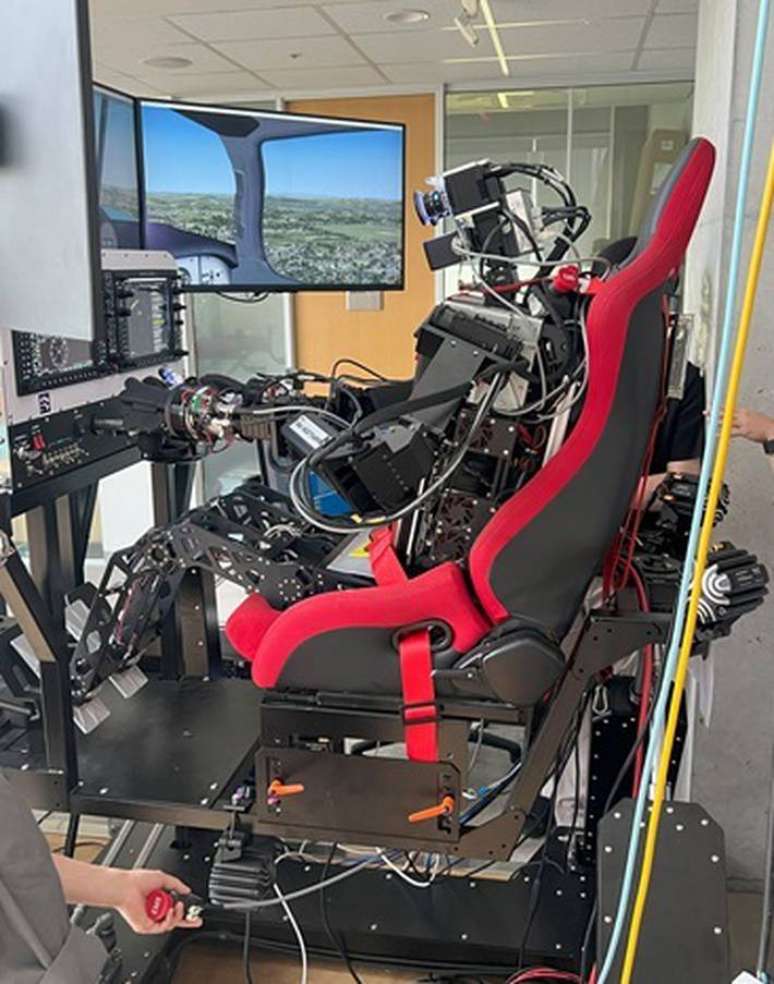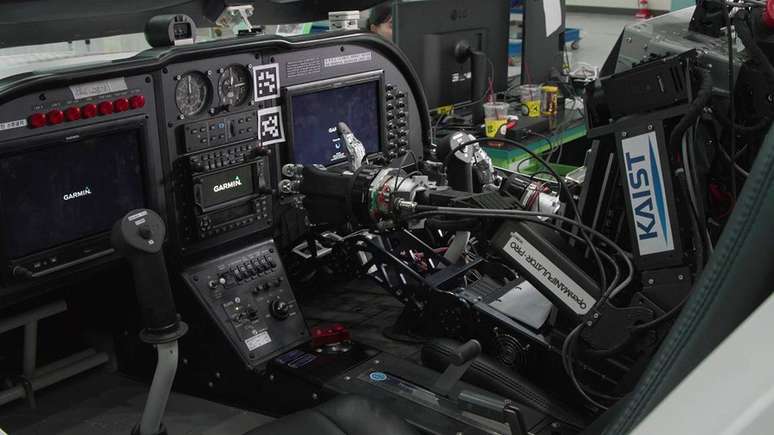Called Pibot, the robot is capable of performing the entire flight sequence, from take-off to take-off, using artificial intelligence and robotics technologies.
Imagine a scenario where you board a airplane whose journey will not be commanded by a person, but by a robot. This scene, while quite futuristic, may not be such a distant reality if it depends on a team of engineers from the Korea Advanced Institute of Science and Technology (KAIST), located in South Korea. Researchers are developing a humanoid robot that will be able to fly an airplane on its own.
The “pilot” is called Pibot. Combining the technologies of artificial intelligence and robotics, the team developed a robot that can sit in a normal cockpit and perform the entire flight sequence, from aircraft departure to taxi, take-off and landing, cruise and pedaling, using the control levers and the regular instrument cluster, according to KAIST.
Control of an airplane by the non-human pilot could be accomplished without modifying any part of the aircraft. According to KAIST, in a release, “this is a key difference that distinguishes this technology from existing autopilot or unmanned aerial vehicle functions.”
While existing robots usually perform repeated movements in a fixed position, Pibot can analyze the state of the cabin and the situation outside the aircraft using an integrated camera, says KAIST. He can also precisely control the cockpit’s various switches and, even during heavy turbulence, can precisely manipulate the robotic arms and hands.
Another major difference is that Pibot can memorize all Jeppesen aviation navigation charts from around the world, a feat that is statistically impossible for human pilots to accomplish. Similarly, with the help of Chat GPTit can also recall the entire Quick Reference Handbook (QRF), a sort of aeronautical manual that contains all applicable procedures for non-normal and emergency conditions.
Therefore, it is also able to respond immediately to various situations, as well as calculate safe routes in real time based on the flight status of the aircraft, resulting in faster emergency response times than human pilots.
The research team expects, at some point, to be able to use the robot’s pilot to commandeer an actual light aircraft to test its capabilities. If successful, in the future, the researchers intend to commercialize Pibot.
“We hope they (the humanoid robots) will be applied in various other vehicles, such as military cars and trucks, as they can control a wide range of equipment. They will be particularly useful in situations where military resources are severely depleted,” he said Professor David Hyunchul Shim of KAIST, who led the study, said in a statement.

Source: Terra
Rose James is a Gossipify movie and series reviewer known for her in-depth analysis and unique perspective on the latest releases. With a background in film studies, she provides engaging and informative reviews, and keeps readers up to date with industry trends and emerging talents.







